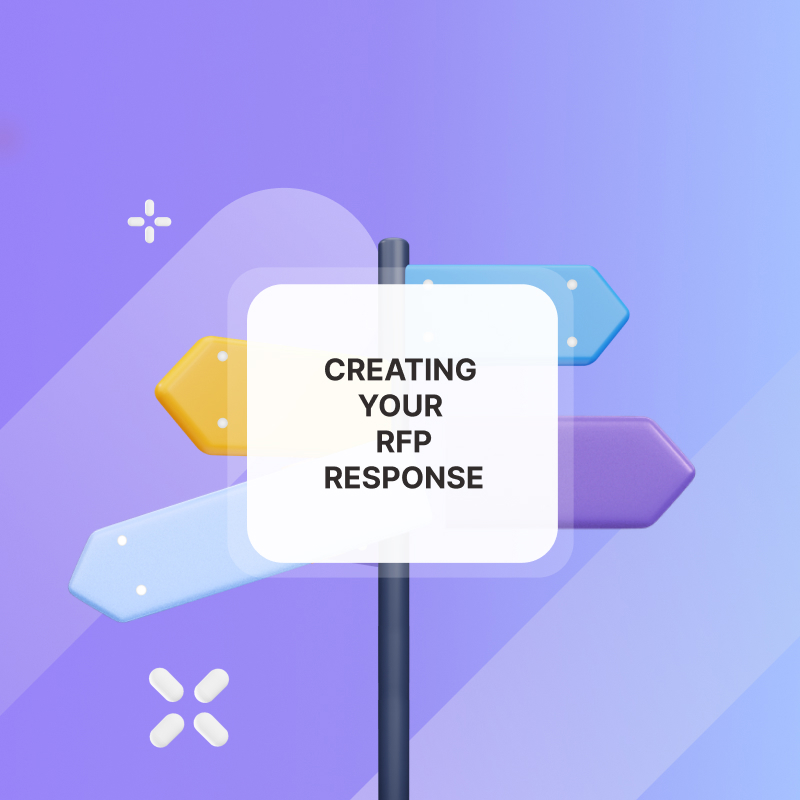
The traditional spray-and-pray lead generation method can be likened to randomly casting a fishing net and hoping to catch a whale in the wrong sea.
You will catch a couple of small fishes but may never hit that jackpot.
Instead of sporadic messaging, account-based sales involves researching specific companies that fit into your ideal client persona. You uncover their unique challenges and decision-makers. Then create a buying experience that inspires and resonates with them.
This mode of selling focuses mainly on relationship building.
What is Account-based Selling?
It involves targeting a defined group of prospects using hyper-personalised sales or marketing efforts and strategies.
It usually involves sales and marketing teams working together to ensure that the outreach to deal closing is carefully crafted in a way that resonates with prospects.
This method of B2B sales is effective because you utilise targeted and compelling content, relevant insights, and genuine communication, which enables you to establish yourself as a trusted advisor, not just another salesperson.
Why is Account-Based Selling Important?
These days, it is a miracle if a generic email gets as much as a glance. However, a well-crafted personalised message will definitely get your prospective customer hooked and interested.
Account-based selling (ABS) is important because it offers numerous benefits to both businesses and their target customers.
- Laser Targeting: Unlike traditional lead generation, account-based selling involves carefully selecting a hyper-defined set of high-value accounts instead of casting a wide net. This enables deep research and understanding of each target, making it easier to personalise outreach and maximise resource allocation.
- Higher Win Rates: The personalised approach used in account-based selling resonates better with specific needs and builds stronger relationships with decision-makers. This often leads to higher win rates and larger deal sizes.
- Better Customer Lifetime Value: Account-based selling focuses on nurturing long-term relationships with key accounts, resulting in increased customer satisfaction, repeat business and advocacy.
- Reduced Customer Acquisition Cost: By focusing on a specific set of high-value accounts, you can optimise marketing and sales efforts, and lower the cost of acquiring new customers.
- Differentiation: In a crowded market, the personalized approach of account-based selling sets you apart from competitors who rely on generic tactics. This unique value proposition helps you attract and retain valuable clients.
- Strategic Growth: By focusing on high-impact accounts, account-based selling allows businesses to strategically target specific markets and achieve consistent growth.
When Should You Adopt Account-based Selling?
Deciding if Account-Based Selling (ABS) is right for your business depends on several factors. Here are some key indicators that you should adopt an account-based selling strategy:
- If you sell high-value products or services with a long sales cycle. Account-based selling can help you focus resources on securing larger deals from key accounts.
- If your ideal customer falls within a relatively small vertical.
- If you prioritise larger deals over high volume, smaller transactions.
- If your sales and marketing resources are limited. Account-based selling helps you focus efforts on fewer, high-impact accounts.
- If you value cultivating long-term, strategic partnerships with key clients
How To Approach Account-Based Selling
Step 1: Research and understand your ideal customer profile
It is important to clearly define your ideal customer profile because this will guide you in identifying key accounts.
What are the characteristics that make a company an ideal fit for your product or service?
The information gathered from this research will also help you to design the buyer's journey effectively.
Tips for Researching Your Ideal Customer Profile (ICP)
Researching and refining your ICP helps you target the right people with the right message, boosting conversion rates and building stronger relationships.
Here are some tips to get you started:
- Analyse existing customers: Check for your high-value, loyal clients. Then look for commonalities in demographics, pain points, and buying behaviors.
- Review sales data: Analyse what characteristics differentiate closed deals from lost opportunities.
- Conduct surveys and interviews: Ask existing customers and target audiences about their challenges, motivations, and buying habits
- Social listening: Look for groups and communities where your ideal customer spends time. Analyse the discussions, questions, and pain points expressed online.
- Industry reports: Look for data and insights about your target market, including trends, pain points, and buying preferences.
- Competitor analysis: Research how competitors position themselves and target their ideal customers. Learn from their successes and identify potential gaps you can fill.
- Focus on pain points: Identify the key challenges your product or service solves for your ideal customer. Frame your messaging around alleviating those pain points.
- Track results and measure impact: Continuously evaluate how your ICP impacts your marketing and sales effectiveness. Adjust your outreach and messaging accordingly.
Sales teams use Hubforce to track the effectiveness of their sales message in real-time.
Step 2: Identify Key Accounts.
Information gathered from step 1 would provide specifications that would guide you in identifying key accounts.
Step 3: Define key personas in the buying committee
The average B2B buying cycle involves an average of 11 decision-makers.
It is important to define the key personas involved in the decision-making process
Some key decision makers are :
- Economic buyer: The person who controls the finances and makes the final decision
- Technical buyer: The person who decides if your product fits into their tech stack
- Champion: The person who is the most excited about your product. This person most likely pitched you to their colleague
Tips for defining key personas in your target accounts
- Check Your Sales Enablement Tool: Start by analysing your sales enablement software. Look for past interactions, buying behaviours, and decision-making roles within your target accounts.
- Company Websites and Social Media: Research the company website and social media profiles of your target accounts. Identify individuals holding relevant titles, participating in industry discussions, or showcasing expertise in areas related to your solution.
- Don't rely solely on job titles: Understand individual responsibilities, areas of influence, and specific challenges each persona faces.
- Segment by Role and Influence: Create persona profiles for different roles within the account, such as champions, sceptics, and decision-makers. Tailor your messaging to resonate with each persona's unique needs and concerns.
- Engage your sales team: Share your persona profiles with your sales team for feedback and validation. Their field experience can add valuable insights.
Step 4: Develop a Clear Problem Statement For Each Persona
You can do this by considering the metrics they care about and tailoring your value proposition in a way that benefits each role.
Don’t forget to keep statements short, and easy to understand. Mirror the words and phrases your personas use to describe their challenges.
Before crafting problem statements ask yourself:
- What are the specific pain points related to their roles?
- What metrics do they care about (e.g., efficiency, cost savings, increased revenue)?
- What industry trends or regulations impact their work?
How To Make Your Account-Based Selling Effort More Efficient
- Ensure that sales and marketing teams align:
Establish common goals for both teams. For example, the sales team can inform marketing team of what content converts buyers more.
The marketing can then focus their efforts on those contents during their outreach.
You can also create a digital sales room which will serve as a repository for all sales content making it accessible to both sales and marketing.
- Empower your champion
Equip your champion with up-to-date information and content to help them advocate your product.
Make your content easy to navigate and access by inviting them to a digital sales room which is much more organised than sending them a truckload of emails and attachments.
Digital sales rooms allow you to structure the sales content in a way that your champion can progress through them stress-free without missing any information.
Keep in mind that your champion buyer also has their job with deadlines and KPIs to meet so they won't spend the whole day searching through email threads.
Pro tip: You can also practice answering common objections with them
- Multithreading
Connect with different roles across the buying company. This works because every role/field has a pain point. You can communicate the value of your product in a way that is relevant to key roles.
You can also leverage your champion to understand the hierarchies and organisational chart. This will give you an idea of the decision-making processes in the account company.
- Make use of Mutual action plans
If buyers do not have clear next steps, it could slow down the deal.
This is very common when you use only emails because important information gets lost in long email threads.
Mutual action plans serve as a clear roadmap between the sales team and the buying team. This helps to prevent any blockages to the sales process.
- Accurately measure engagement and buying intent
Buying intent is very important in the sales process. If you do not accurately measure a prospect’s buying intent, you will waste time and resources on deals that will never close.
How to Scale Account Based Selling
When you create personalised buying journeys for each customer, you get deeper insight into what really matters to prospects and how to improve the sales process.
But how do you scale this process?
You can easily scale personalised buying journeys using digital sales rooms.
Hubforce is a digital sales room that enables you to personalise the buying journey in a scalable way. It enables you to easily create a customised workspacefor each customer where you can easily upload sales content.
You can create a customised digital sales room in 30 seconds using Hubforce AI.
You can also track buyer engagement with your sales content. This insight will enable timely and accurate follow-up decisions.
Hubforce provides smart analytics which helps to calculate engagement scores for each person involved in the buying process.
For example, if you see that the proposal page was visited, downloaded, and shared with different stakeholders, that is a good sign.
Hubforce enables you to monitor;
- How many times your sales content was viewed
- How long was spent on it
- What time it was viewed
- If it was downloaded
- if it was shared, and who it was shared with.
Create 5 digital sales room for free and speed up deals with customers .
















